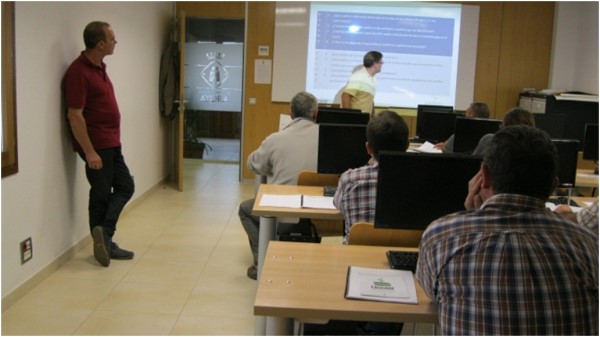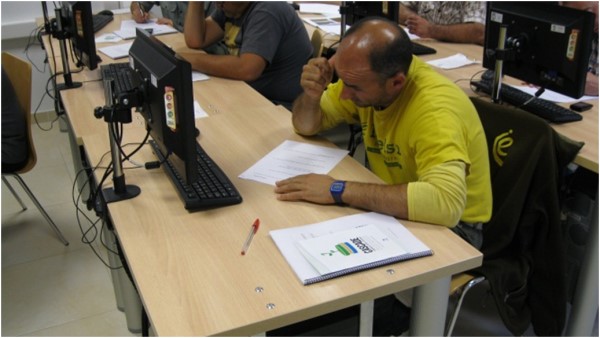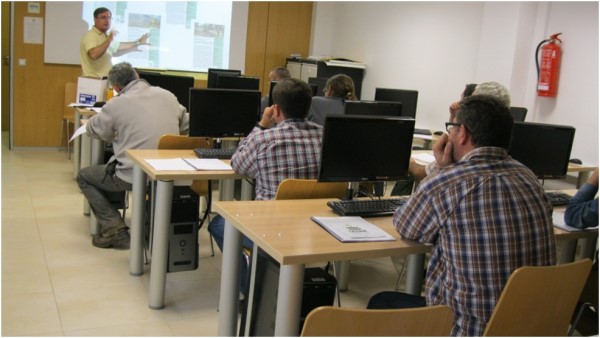| Authors: | Cecelia De Ita, Lindsay Stringer, Luuk Fleskens, Andy Dougill, with input from study sites |
| Editor: | Jane Brandt |
| Source document: | De Ita et al. (2015) Report on stakeholder adaptation strategies in the CASCADE study sites. CASCADE Project Deliverable 8.1. |
Stakeholders in Ayora perceived changes in vegetation, wildlife and rural practices. Regarding changes in vegetation, stakeholders noted the general loss of natural vegetation, the expansion of shrublands, and the accumulation of biomass causing “fuel load build-up”. Perceived changes in wildlife included the loss of small game species but the increase in big game species and an increase in pests. Land abandonment, undergrazing and soil erosion were also perceived. Stakeholders agreed that the main driver of change was wildfires, as well as the lack of, or poor, environmental management practices, and the use of windmills.
Table: Drivers of change identified by the stakeholders in Ayora, Spain.
| Government institutions | Associations/Land owner | Permanent users and managers | Transient stakeholders | Researchers | |
| Wildfires | X | X | X | X | X |
| Depopulation | X | X | |||
| Climate change | X | X | |||
| Lack of /poor environmental management or mismanagement | X | X | |||
| Droughts | X | ||||
| Windmill installation | X | X | X | ||
| Water scarcity | X | ||||
| Pests | X | ||||
| Undergrazing | X | X | |||
| Changes in wildlife | X | ||||
| Changes in agricultural practices | X | X | |||
| Flooding | X |
Decision makers mentioned that an increase in environmental research and management plans has occurred, however, these were not delivering the expected results, or, as a government representative asserted, “they are not always completely implemented”.
Permanent (as opposed to transient) land users and managers quoted more drivers of change and recognised changes in wildlife and agricultural practices as drivers, as well as wildfires and depopulation.



The forecasted expected changes were shared by all stakeholders, as they anticipated an increase in climate-related events. Their views can be summarized by a transient land user who predicted: “More fires, invasion of and the introduction of big game species (wild sheep, wild boar, Barbary sheep (Ammotragus lervia)), steady disappearance of small game species, more installation of industries within the forest, and a reduction of precipitation”. Two thirds of stakeholders representing land users detailed that they have not adapted to the changes or that they have absorbed the loss as part of their response. They mentioned that they are “resigned” to the detrimental changes as they will happen regardless of their efforts. Two stakeholders mentioned the relocation of their activities and protecting the land as their response to changes: “Resignation, changing game habits and protecting the land as much as possible”. In Ayora, there were 11 proposals to improve environmental conditions, however according to the stakeholders, only 5 measures were being implemented.
Stakeholders’ perceptions of the alternative management options, as well as the policy/measures required highlighted different perspectives within the different stakeholder groups: while land users focused on environmental management and cultural measures, government representatives focused on administrative and economic measures.
Table: Perceptions of alternative land management options and policies required by stakeholder groups in Ayora.
| Stakeholder group | What alternative land management options will you consider? | What policy / economic support is required to facilitate the adaptations and changes you mentioned? |
| Researchers | • Managing the landscape towards mature forests – long term approach/scope. • Promotion of local employment in rural areas and economic activities within the forest sector. |
• Clearing forest lands, especially those reforested with pines in the past • Revision of European agricultural policies and directives (CAP) towards an intensification of the extensive uses of the land (promotion of grazing) and improve the protocols on early warnings of fire. • Avoidance of cuts in funds devoted to forest management and fire prevention. |
| Land users | • Encouraging society to restore the landscape (e.g. quads and motocross that destroy tracks and paths). • Cultivating set-aside agricultural lands with aromatic plants (good for beekeepers). • Using reforestation with less flammable species as natural firebreaks. • Building water ponds within the landscape to fight against fire. • Developing of systems for watering crops in case of extreme necessity. • Controlling industries (photo-voltaic, windmills). • Promoting green alternative energies and measures to increase biodiversity and, hence, more flowering plant options. |
• Greater support, especially workers, from the administration for fuel control (clearing) and forest track maintenance. • Education on the role of the forest (in soil protection) and raise society’s awareness so that they know that investment in the forest is profitable in the mid- and long-term. • Subsidies to municipalities in order to fix and attract population, encourage sustainable industries (cheese, milk, meat, etc) based on traditional uses of the land. • Enhance companies that produce renewable energy, and promote education campaigns to raise awareness about the negative consequences of using fossil fuels. The national administration should also increase subsidies to beekeepers because if this sector collapses, no pollination will occur and all ecosystems will degrade. |
| Government institutions | • Managing cooperatives for sustainable exploitation of forests and shrublands. • Grazing and cultivation of different forest crops. • Promoting the recovery of field houses (‘casas de campo’) and increase the number of people living there and using the ecosystem in traditional ways. |
• Subsidies to local people, reduction of taxes to farmers, rural industries and companies, increase support to rural areas, and requirements that big land owners reinvest in their lands. • Policy enforcement to ensure forest owners follow the environmental directives with the supervision of the environmental services of the public administration. • Greater investment in forest management to deliver an economic return |
Note: For an overview results of the workshops on identifying adaptation strategies in all study sites and the concluding recommendations see »Adaptation strategies.
